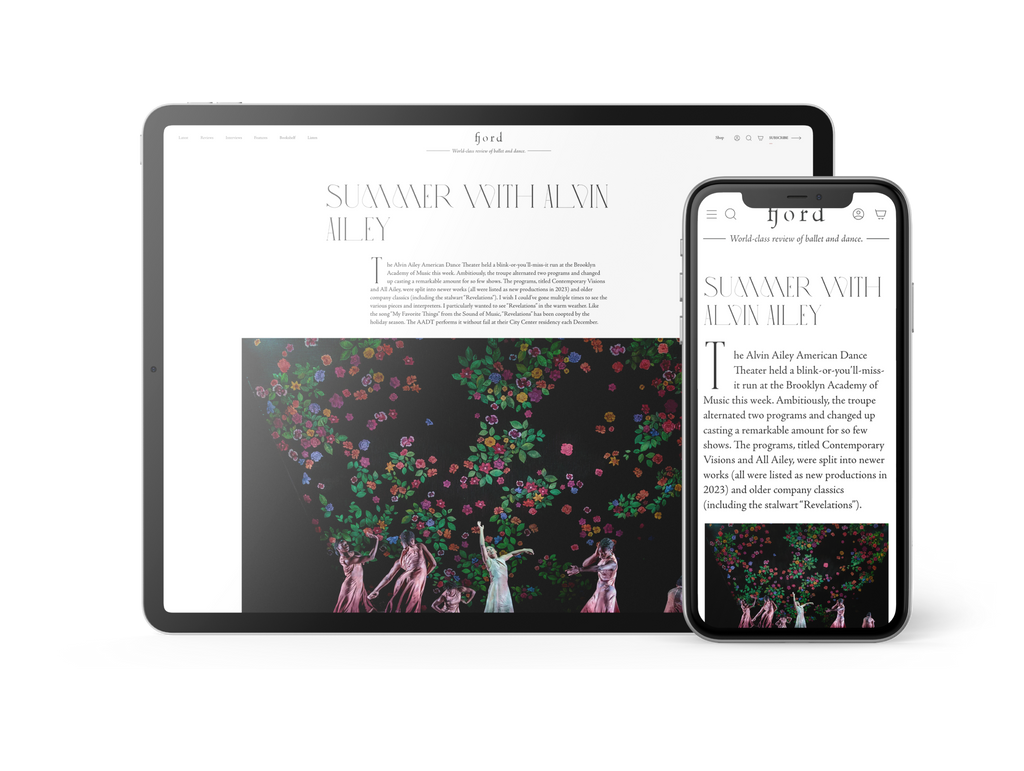Ryan Tomash Steps into a New Role
Back in October, New York City Ballet got a new cowboy. His arrival occurred in the final section of George Balanchine’s “Western Symphony.”
Continue Reading
World-class review of ballet and dance.
Mystic, vibrant, violent, feminist—Akram Khan’s newest work is all this and more. The hour-long piece stars Khan himself alongside Ching-Ying Chien and Christine Joy Ritter, and takes its inspiration from Karthika Naïr’s 2015 collection of poems Until the Lions, a reinterpretation of the Mahabharata, the ancient Sanskrit epic. This postmodern narrative layering—in which mythology is reframed through a modern literary lens and then channeled through a prism of contemporary dance, itself informed, in this case, by kathak tradition—lends a rich complexity to the work, one that’s felt in many aspects, from the stratified music to the mosaic sequencing.
Performance
Place
Words

Akram Khan and Ching-Ying Chien in “Until the Lions.” Photograph by Jean Louis Fernandez


“Uncommonly intelligent, substantial coverage.”
Your weekly source for world-class dance reviews, interviews, articles, and more.
Already a paid subscriber? Login
Back in October, New York City Ballet got a new cowboy. His arrival occurred in the final section of George Balanchine’s “Western Symphony.”
Continue ReadingWhen Richard Move enters from stage left, his presence is already monumental. In a long-sleeved gown, a wig swept in a dramatic topknot, and his eyes lined in striking swoops, the artist presents himself in the likeness of Martha Graham—though standing at 6’4, he has more than a foot on the late modern dance pioneer.
Continue ReadingPerhaps not since Mikhail Fokine’s 1905 iconic “The Dying Swan” has there been as haunting a solo dance depiction of avian death as Aakash Odedra Company’s “Songs of the Bulbul” (2024).
Continue ReadingDance, at its best, captures nuance particularly well, allowing us to feel deeply and purely. In its wordlessness, it places a primal reliance on movement and embodied knowledge as communication all its own. It can speak directly from the body to the heart, bypassing the brain’s drive to “make sense of.”
Continue Reading
comments